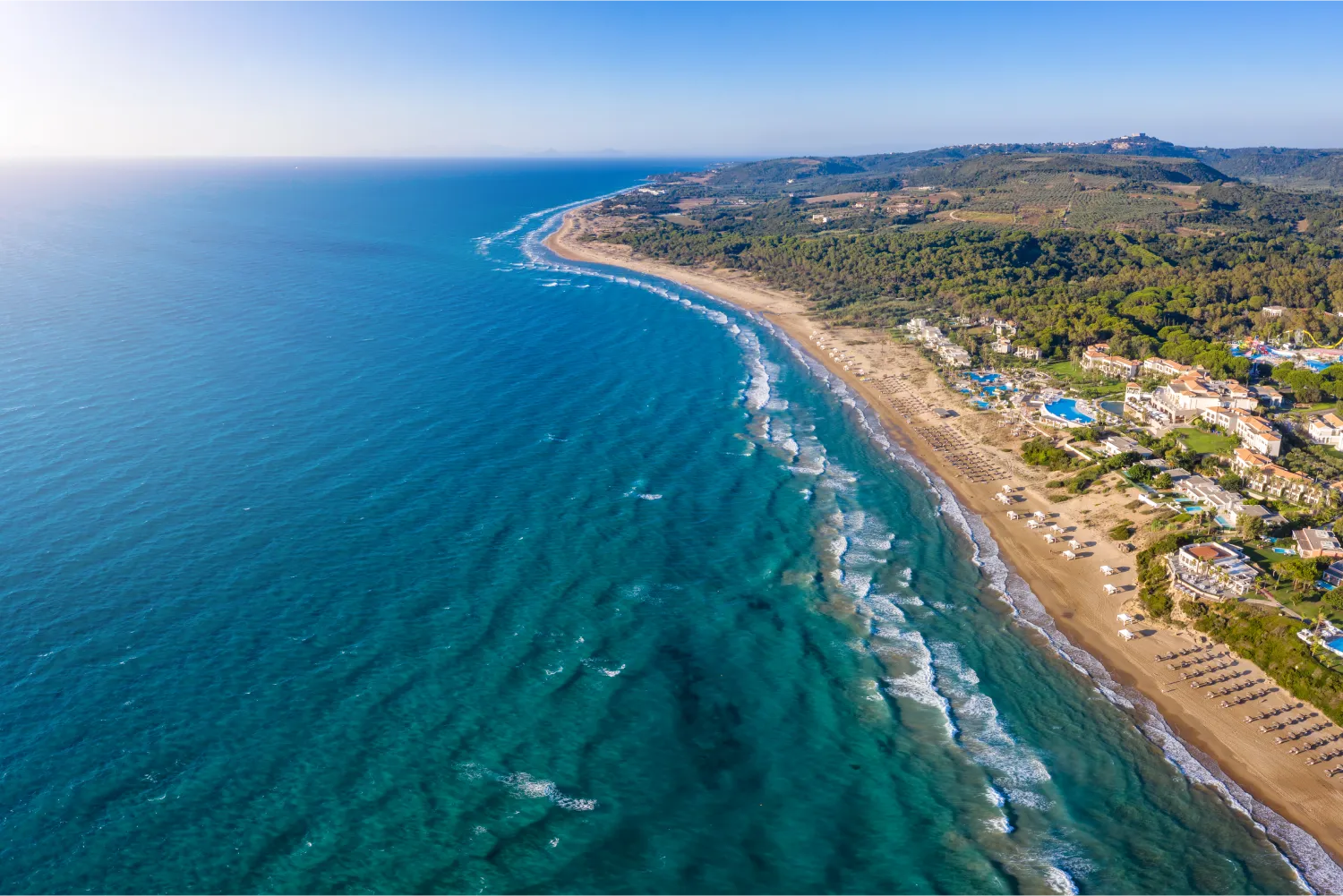Peloponnese, the southernmost region of mainland Greece, is a treasure trove of history, culture and natural beauty. From ancient ruins to picturesque seaside towns, Peloponnese has something to offer for every type of traveler. In the following lines, we will explore the highlights of this fascinating region.
History and culture
Peloponnese is steeped in history, with ancient ruins and monuments scattered throughout the region. The most famous of these is the ancient city of Olympia, the birthplace of the Olympic Games. Visitors can explore the ruins of the stadium, gymnasium and temples and learn about the history of this iconic event.
Another must-visit site is the ancient city of Mycenae, home to the legendary king Agamemnon. Here, visitors can explore the ruins of the city’s impressive walls, tombs and palaces and learn about the Mycenaean civilization that flourished here in the Bronze Age.
For those interested in more recent history, Peloponnese has plenty to offer as well. The region played a key role in the Greek War of Independence against Ottoman rule in the 19th century, and visitors can explore the historic towns of Nafplio and Tripoli, which served as important centers of resistance.
In addition to its rich history, Peloponnese is also known for its vibrant culture. Traditional music and dance are an important part of daily life here and visitors can experience these cultural traditions firsthand at festivals and events throughout the year.
Natural beauty
Peloponnese is also blessed with stunning natural beauty. The region is home to some of Greece’s most beautiful beaches, including the famous Voidokilia beach with its crescent-shaped bay and crystal-clear waters.
Inland, visitors can explore the rugged mountains and lush forests that cover much of the region. The Taygetus mountain range is a popular destination for hikers and nature lovers, offering stunning views and a chance to spot rare wildlife such as eagles and wild boar.
Food and drink
No trip to Peloponnese would be complete without sampling some of the region’s delicious food and drink. Peloponnese is known for its high-quality olive oil, honey and wine, all produced using traditional methods passed down through generations.
Visitors can also sample local specialties such as feta cheese from the nearby town of Tripoli, or fresh seafood from the coastal towns of Gythio and Kalamata.
Conclusion
Peloponnese is a truly unique destination that offers something for everyone. Whether you’re interested in history, culture, nature, or simply relaxing on a beautiful beach, this region has it all. So why not plan your next trip to Peloponnese and discover all that this fascinating region has to offer?
Ferries to/from Peloponnese
If you're planning a trip to Peloponnese, one of the most convenient and enjoyable ways to get there is by ferry. In this guide, we'll give you all the information you need to know about ferries to/from Peloponnese in Greece.
Ferry routes and carriers
There are several ferry routes that connect Peloponnese with other destinations in Greece and beyond. Some of the most popular routes include:
- Patras to Italy: This route connects the port of Patras in Peloponnese with several ports in Italy, including Ancona, Bari, Brindisi, and Venice
- Piraeus to Peloponnese: This route connects the port of Piraeus in Athens with several ports in Peloponnese, including Nafplio, Kalamata, and Gythio
- Kyllini to Zakynthos and Kefalonia: This route connects the port of Kyllini in Peloponnese with the islands of Zakynthos and Kefalonia
Ferry schedules and prices vary depending on the season and the operator, so it's important to check the latest information before you travel. You can find schedules and book tickets online through our online booking platform
Ferry types and facilities
The type of ferry you'll be traveling on depends on the route and the operator. Some of the most common ferry types include:
- High-speed ferries: These are fast catamaran-style ferries that can travel at speeds of up to 40 knots. They're typically used on shorter routes and offer comfortable seating, air conditioning, and onboard cafes or snack bars
- Conventional ferries: These are larger ferries that offer both passenger and vehicle transport. They're typically slower than high-speed ferries but offer more amenities, including restaurants, bars, and cabins for overnight journeys
- Hydrofoils: These are small, fast ferries that can travel at speeds of up to 50 knots. They're typically used on shorter routes and offer basic seating and limited facilities
Facilities onboard ferries vary depending on the type of ferry and the operator. However, most ferries offer comfortable seating areas, restrooms, cafes or snack bars, and sometimes restaurants or bars. Some ferries also offer cabins for overnight journeys.
Tips for your ferry travel
If you're planning to travel by ferry to/from Peloponnese in Greece, here are some tips to help make your journey smoother:
- Book your tickets in advance: Ferry schedules can be unpredictable, especially during peak travel season. To ensure you get a seat on your preferred ferry, it's best to book your tickets in advance
- Arrive early: Ferries typically start boarding passengers at least 30 minutes before departure time. To avoid missing your ferry, plan to arrive at least 45 minutes before departure time
- Pack light: Most ferries have limited space for luggage, so it's best to pack light and only bring what you need for your journey
- Bring snacks and water: While most ferries have cafes or snack bars onboard, prices can be high. To save money and ensure you have something to eat and drink during your journey, bring your own snacks and water
- Be prepared for delays: Ferry schedules can be affected by weather conditions or other unforeseen circumstances. Be prepared for delays and bring something to keep you entertained during any unexpected wait times
